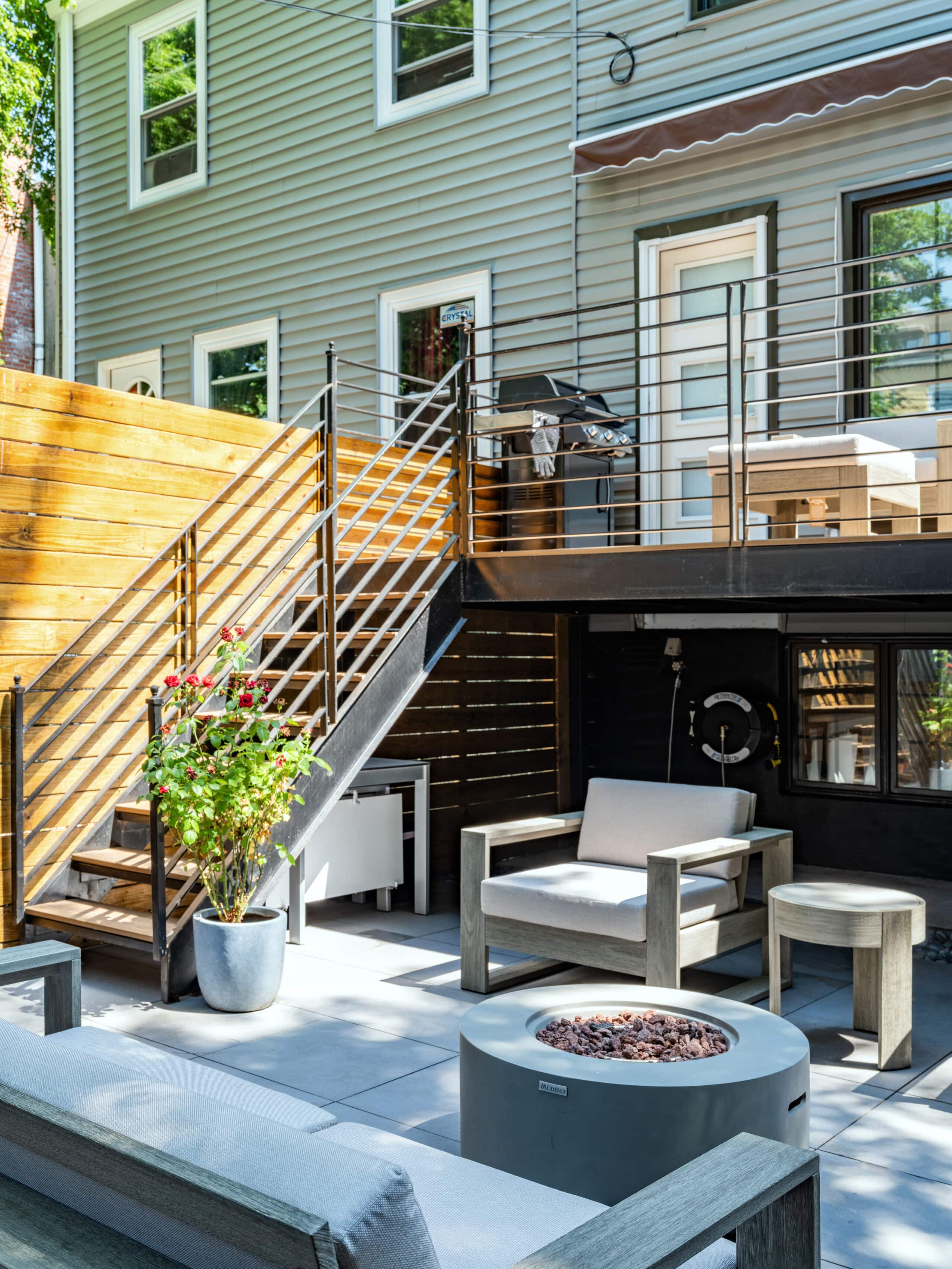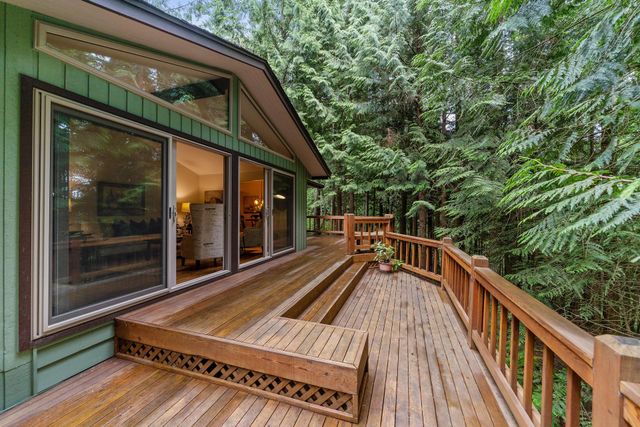A Step-by-Step Technique to Efficient Deck Installment for House Owners
When it comes to setting up a deck, careful preparation is crucial. Begin by assessing your space and establishing clear goals. Understanding just how to develop your deck layout can make all the distinction in maximizing your outdoor location.
Evaluating Your Space and Establishing Objectives
How do you imagine your perfect deck? Take dimensions to understand exactly how much room you've got to work with. Assume about exactly how you want to utilize the deck: will it be a comfy resort, a celebration spot for close friends, or a location for family members meals?
Next, established specific goals. Do you intend to incorporate seats, a grill, or probably planters? Visualize the circulation of activity and confirm it enhances your home's design. Prioritize capability, but do not neglect aesthetic appeals. Develop a list of must-haves and nice-to-haves. This clearness will certainly lead your decisions and streamline the planning process. By examining your room and establishing clear objectives, you'll lay the structure for a deck that fulfills your needs perfectly.
Picking the Right Products
With your objectives and area detailed, it's time to select the ideal materials for your deck. Take into consideration the environment in your location. If you reside in a region with heavy rainfall or moisture, choose materials resistant to moisture, like composite decking or pressure-treated timber. If you favor an all-natural appearance, hardwoods like cedar and redwood offer beauty and durability yet might need more maintenance.
Following, consider your budget plan. Composite products can be more expensive upfront but usually last longer and require less upkeep. If you get on a tighter budget plan, treated lumber is budget friendly and extensively offered, but it might need regular maintenance.
Last but not least, don't forget visual appeals. Pick shades and structures that complement your home and landscape. By carefully picking your materials based upon these aspects, you'll guarantee your deck not just satisfies your needs yet likewise enhances your outside space.
Creating Your Deck Layout
Developing a well-thought-out deck layout is important for making best use of both functionality and enjoyment. Start by thinking about exactly how you prepare to utilize the area.
Action your backyard to assure your deck fits sympathetically within the landscape. Assume concerning circulation and accessibility; it's important to create pathways that make movement easy. If you're adding furnishings, illustration a format that suits seats, tables, and any type of extra functions like planters or a fire pit.
Placing your deck to capture sunshine throughout cooler months can improve its usability. With mindful preparation, your deck layout will certainly not just serve your needs yet likewise elevate your outdoor experience.
Getting Essential Licenses
Before you begin developing your deck, it is essential to examine neighborhood guidelines and obtain the necessary authorizations. Each area has specific regulations controling deck building, including dimension, height, and products - wood deck builders contractors near me. Begin by visiting your neighborhood building division or their web site to gather details on what's required
You'll likely require to complete an authorization application and offer detailed strategies for your deck, including measurements and materials. Do not neglect to inspect if any zoning legislations or property owner association standards apply to your residential property, as they may enforce additional constraints.
Once you submit your application, the evaluation procedure can take time, so strategy in advance. If your project doesn't meet neighborhood codes, you might need to revise your strategies, which can delay your setup. By safeguarding the necessary licenses initially, you assure that your deck task stays on track and adhere to all guidelines.
Preparing the Ground and Structure
Preparing the ground and structure for your deck is important for making sure security and long life. Beginning by picking the right area-- preferably, a level area that drains well. Clear the site of any type of debris, plants, or rocks. Next off, note the synopsis of your deck making use of risks and string to visualize the space.
As soon as you have actually specified the area, dig down to eliminate the topsoil, reaching a depth of regarding 6 inches. This aids protect against moisture accumulation and rot. If you're using concrete footings, Get the facts dig holes where your messages will go, at the very least 12 inches deep to get to secure soil.
Take into consideration adding gravel to the base of these holes for water drainage. Compact the soil to create a solid base, and check for degree with a lengthy board or degree tool. By taking these steps, you'll establish a strong foundation that sustains your deck for several years to find.
Developing the Deck Framework

This framework is essential for the sturdiness of your deck, so take your time and validate each part is effectively mounted. With your deck framework constructed, you're one action better to enjoying your new outside sanctuary!
Including Finishing Touches and Upkeep Tips
Now that your deck is developed, it's time to concentrate on the ending up touches and upkeep. Selecting the ideal tarnish can improve its look, while regular cleansing maintains it looking fresh. Don't forget to adhere to a seasonal upkeep list to assure your deck remains in terrific shape year-round.
Picking Deck Staining Options
How do you choose the appropriate tarnish for your deck? Begin by examining the type of wood. Various woods absorb discolorations differently, so inspect compatibility. Next, believe about the surface you want. Clear spots showcase the timber's natural beauty, while semi-transparent options include color without entirely hiding the grain. Solid discolorations give optimal protection, perfect for used or aged timber.

Regular Cleaning Methods

Seasonal Maintenance List
A well-maintained deck can transform your outdoor room right into a sensational retreat, so it's vital to adhere to a seasonal maintenance list. Start each spring by checking Find Out More for any damage, such as loose useful source boards or rusting fasteners. Clean the surface completely, removing dirt and particles. Once dry, use a protective sealer to protect against wetness and UV rays.
In summertime, look for mold and mildew or mildew and address it without delay. Maintain the deck without mess and look for indicators of wear.
As autumn methods, clear fallen leaves and debris to avoid wetness buildup. Tighten any loosened screws.
Ultimately, throughout wintertime, verify that snow and ice are cleared to stop architectural damage. Routine interest to these tasks keeps your deck looking excellent year-round!
Often Asked Inquiries
Just how Long Does a Common Deck Installation Take?
A normal deck installation can take anywhere from a couple of days to a number of weeks, depending on dimension, materials, and climate. You'll desire to intend accordingly to guarantee every little thing goes efficiently and effectively.
Can I Install a Deck on Uneven Ground?
Yes, you can set up a deck on irregular ground. You'll need to level the area, usage adjustable blog post sustains, or think about constructing a multi-level deck to suit the slope and assurance stability.
What Devices Do I Required for Deck Setup?
You'll need a few essential devices for deck installment: a tape action, degree, saw, drill, hammer, and screws. Do not fail to remember security equipment like handwear covers and goggles to keep yourself safeguarded while working.
How Do I Ensure My Deck Is Safe and Sturdy?
To guarantee your deck's risk-free and tough, routinely look for loosened boards, protected railings, and correct assistance. Usage high quality products, adhere to building regulations, and consider expert examinations to keep its stability in time.
What Prevail Blunders to Avoid During Setup?
When setting up a deck, prevent common blunders like inappropriate measurements, ignoring licenses, making use of low-grade products, or skipping the progressing process. These oversights can endanger security and durability, so take note of information throughout the project.